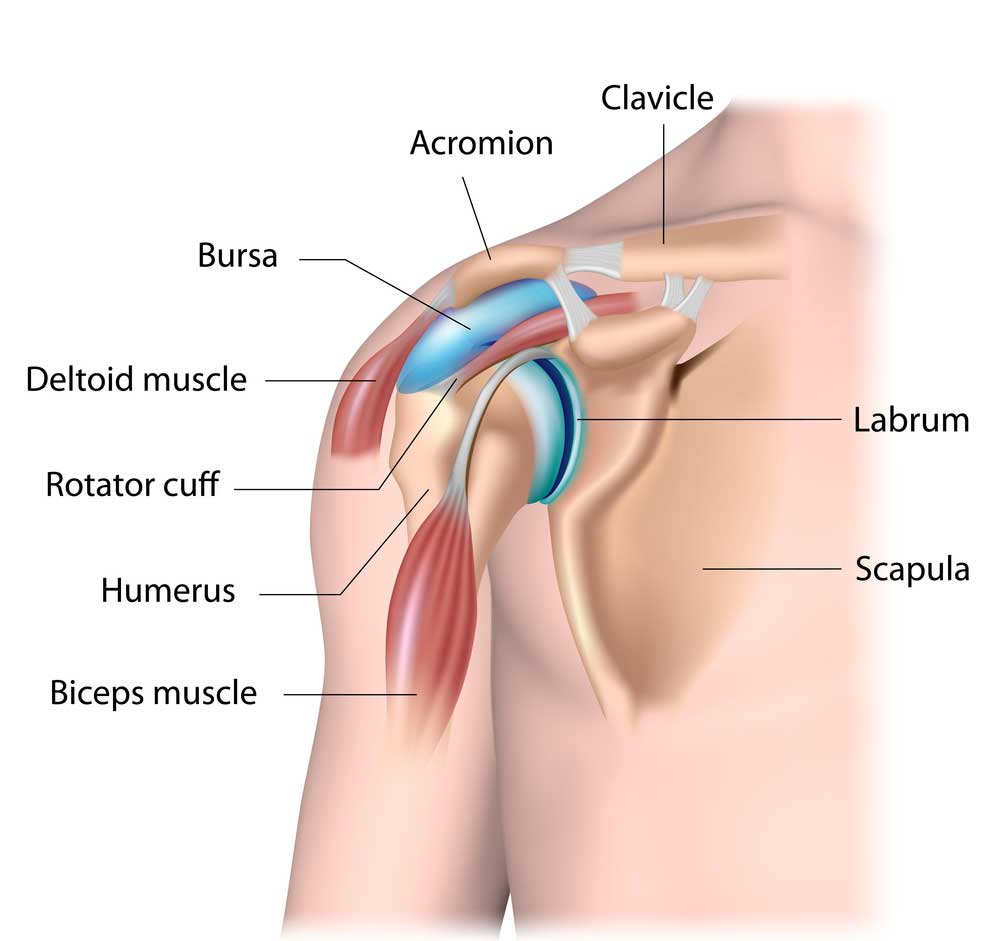Shoulder Expert

The shoulder joint it the most flexible joint in the human body. It is also one of the most complex and largest joints. The shoulder anatomy is complex, allowing for a large range of motion. However, this mobility can come at the price of injury. Shoulder problems and shoulder pain are common and should always be evaluated by an orthopedic shoulder specialist. Shoulder specialist, Doctor Benedict Nwachukwu provides diagnosis as well as surgical and nonsurgical treatment options for patients in Manhattan, New York City, NY who have developed a shoulder injury. Contact Dr. Nwachukwu’s team today!
What is the anatomy of the shoulder?
The shoulder joint it the most flexible joint in the human body. It is also one of the most complex and largest joints. Three major bones make up the shoulder joint: the humerus (arm bone) scapula (shoulder blade) and the clavicle (collarbone). Within the joint are three small joints that work together to give the shoulder its incredible range of motion and mobility. These joints are called the acromioclavicular, sternoclavicular and the glenohumeral joints. Dr. Benedict Nwachukwu, orthopedic shoulder specialist, serving patients in Manhattan, New York City and the surrounding New York boroughs has special training and experience in diagnosing and treating conditions of the shoulder.

What are the bones that make up the shoulder joint?
Three major bones connect to create a 90-degree angle at the shoulder:
- Humerus – The long bone in the upper arm that connects to the scapula and clavicle. The ball at the top of the humerus fits into the part of the scapula called the glenoid, forming the ball-and-socket joint.
- Scapula – A flat triangular bone at the back of the shoulder, most commonly called the shoulder blade. It connects to the collarbone at acromioclavicular joint.
- Clavicle – A flat, thin bone that extends across the front of the shoulder and stabilizes movement. This bone is the major connection point between the axial skeleton (bones of the head, trunk and vertebra) and the upper extremity.
Which joints make up the shoulder joint?
- Acromioclavicular joint – Also called the AC joint, is located between the scapula and the clavicle. The AC joint forms the highest point of the shoulder and is responsible for the lifting ability of the shoulder.
- Sternoclavicular joint – The joint located at the center of the chest. This joint is responsible for allowing clavicle movement.
- Glenohumeral joint – This is the main ball-and-socket joint of the shoulder that is created by the scapula and the head of the humerus. This joint is responsible for the range of motion of the shoulder including rotation, upward and downward movement (flexion), as well as inward and outward (abduction) movement.
What are the other important structures of the shoulder joint?
Other structures of the shoulder joint include soft tissues that help stabilize, move and cushion the joint. These structures include cartilage, tendons, ligaments and muscles. All these structures work in tandem to move, cushion, connect, and attach the shoulder joint. These include:
- Rotator Cuff – A small group of muscles and tendons that surround the shoulder joint. The rotator cuff is responsible for holding the head of the humerus securely within the shallow socket of the shoulder. This grouping contributes to shoulder strength and stability.
- Labrum – A flexible cuff of cartilage tissue that forms a cup to hold the humerus located in the joint. The labrum provides stability for the ball and socket joint and prevents the two bones from separating from one another. The labrum can become torn when the shoulder dislocates or shifts.
- Bursa – Small, fluid-filled sacs found between the bones and surrounding soft tissue. Bursa are responsible for lubricating and cushioning the rotator cuff tendon as it moves. In certain situations, shoulder bursae can become inflamed and cause a painful condition called shoulder bursitis.
The shoulder anatomy is complex, allowing for a large range of motion. However, this mobility can come at the price of injury. Shoulder problems and shoulder pain are common and should always be evaluated by an orthopedic shoulder specialist. Dr. Benedict Nwachukwu can offer patients in New York the latest treatment options for their shoulder problems.
For more resources on Shoulder Anatomy and how you can be evaluated for your shoulder condition, please contact the office of Benedict Nwachukwu, MD, orthopedic shoulder specialist serving Manhattan, New York City and surrounding New York boroughs.